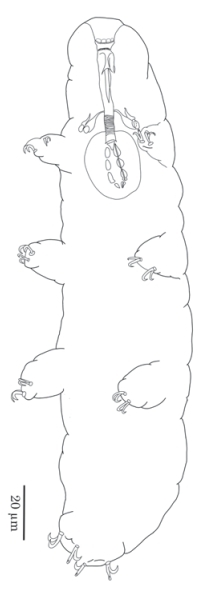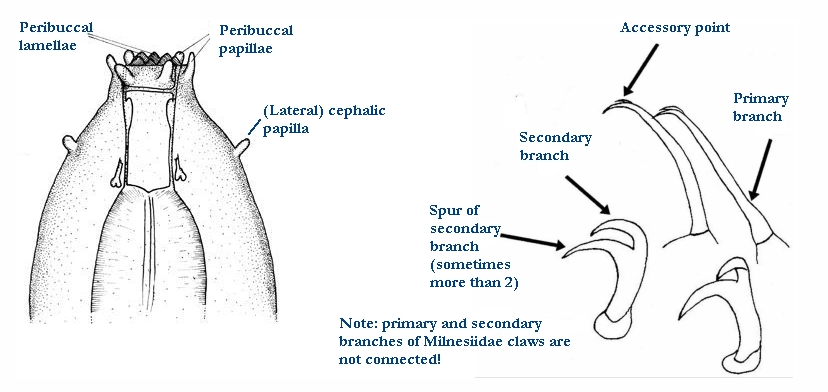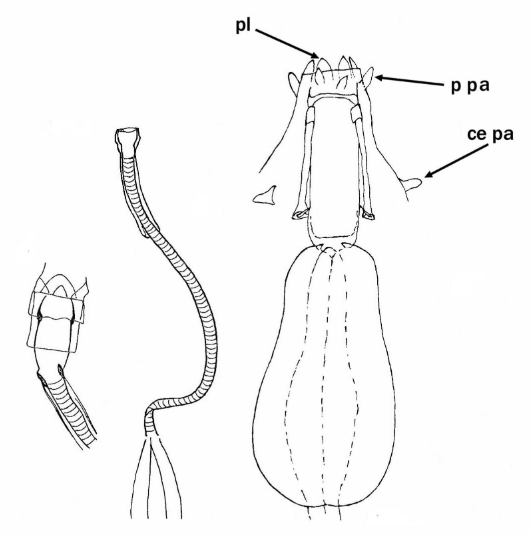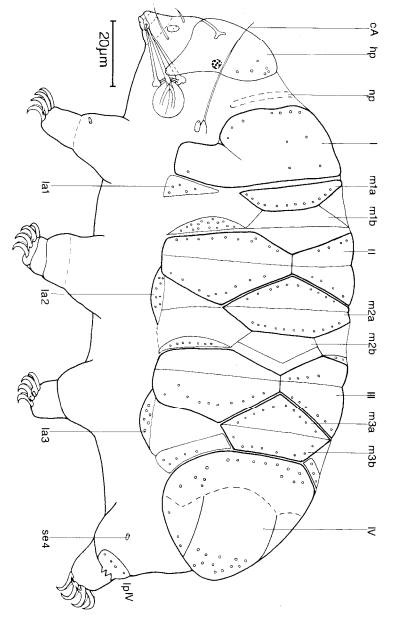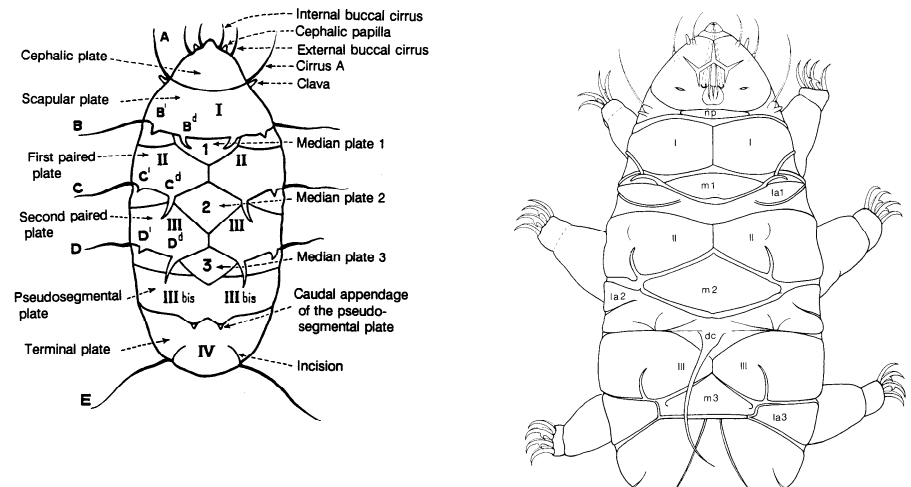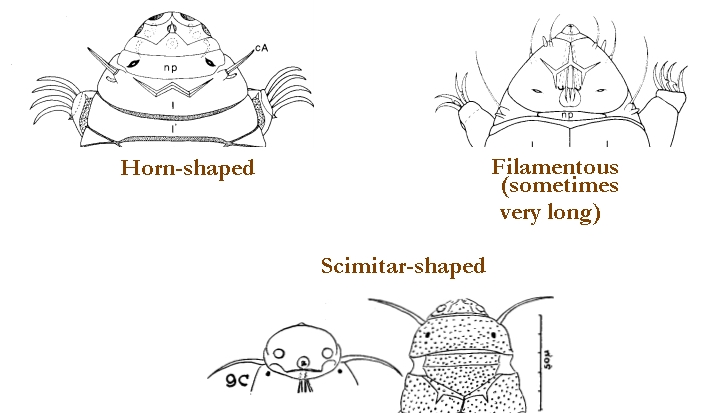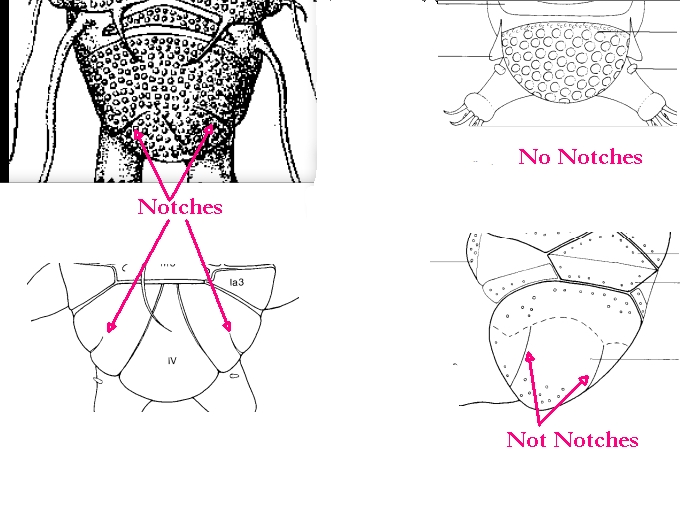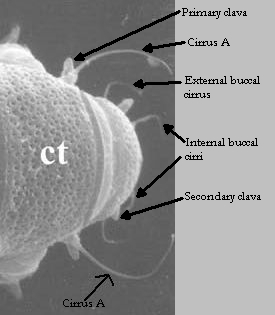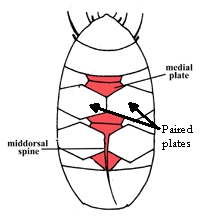Macrobiotoidea from Marley et al. 2011: “Parachela; claw pairs symmetrical (2112); AISM generally asymmetrical, due to the ventral lamina, with lateral caudal processes of crests and hooks.”
Macrobiotoidea from Bertolani et al. 2014: “Double claws symmetrical with respect to the median plane of the leg (sequence 2112); double claw of each leg similar in shape and size; each double claw characterized by the presence of a peculiar stalk (peduncle) with cylindrical or laminar shape; 10 peribuccal lamellae or papulae; buccal tube strengthened by a ventral lamina. Eggs laid freely and always surrounded by an ornamented shell.”
Macrobiotidae from Thulin 1928: “Fam. Macrobiotidae zeichnet sich dadurch aus, dass Sinnesanhänge am Kopfe fehlen. Die Krallen sind zweihakig. Die hintere an jeder Extremität kann mehr oder weniger vollständig in Basal- und Terminal-kralle aufgeteilt sein, die vordere ist dagegen niemals in dieser Weise differenziert. Die Länge und Weite der Mundröhre variiert erheblich innerhalb dieser Familie, ebenso die Form des Schlundkopfes. Die Mundöffnung ist nicht durch Klappen verschliessbar, aber bisweilen (bei vielen Macrobiotus-Arten) von einem Lamellenkranz umgeben. Die Stilette sind mehr oder weniger stark bogenförmig gekrümmt, mit der Konvexität des Bogens medialwärts gewendet, und kräftiger als bei den übrigen Tardigraden.”
Translation: Fam. Macrobiotidae is characterized by the fact that sensory appendages are missing on the head. The claws are double-hooked. The posterior of each claw may be more or less completely divided into basal and terminal [secondary] claws, whereas the anterior [primary branch] is never differentiated in this way. The length and width of the mouth tube varies considerably within this family, as does the shape of the pharynx. The mouth opening is not closed by flaps, but sometimes (in many Macrobiotus species) surrounded by a lamellae. The stylets are more or less curved, with the convexity of the arch turned towards the medial direction, and stronger than in other tardigrades.
Macrobiotidae from Guidetti et al. 2005: “Parachela with double-claws of each leg similar in shape and size and symmetrical with respect to the median plane of the leg (sequence 2112). Y-shaped claws, with claw branches fused over a tract of variable length (common tract). Ten peribuccal structures (lamellae or papulae) present. Epicuticular layer compact and uniform, without pillar-like structures.”
Macrobiotidae from Bertolani et al. 2014: “Double claws Y-shaped, with the two branches forming an evident common basal tract of variable length. Buccal tube completely rigid, or caudally annulated.”
Genus description from Guidetti & Pilato 2003: “Diploclaws of a slightly modified ‘hufelandi type’ with the basal portion subdivided into a very short stalk and a large distal portion less sclerified than the common tract; lunules present; buccal-pharyngeal tube subdivided into an anterior rigid portion (Provided with a ventral strengthening bar) and a flexible caudal portion with a spiral cuticular thickening; peribuccal lamellae present; stylet furcae well developed and of a peculiar shape, with the posterior processes arched and converging backwards.”

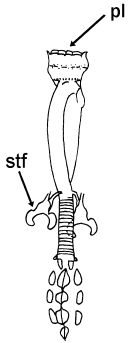

Citations:
Bertolani R, Guidetti R, Marchioro T, Altiero T, Rebecchi L, Cesari M. 2014. Phylogeny of Eutardigrada: New molecular data and their morphological support lead to the identification of new evolutionary lineages. Molecular Phylogenetics and Evolution. 76: 110-126.
Guidetti R, Gandolfi A, Rossi V, Bertolani R. 2005. Phylogenetic analysis of Macrobiotidae (Eutardigrada, Parachela): a combined morphological and molecular approach. Zoologica Scripta. 34 (3): 235-244.
Guidetti R, Pilato G. 2003. Revision of the genus Pseudodiphascon (Tardigrada, Macrobiotidae), with the erection of three new genera. Journal of Natural History. 37 (14): 1679-1690.
Marley NJ, McInnes SJ, Sands CJ. 2011. Phylum Tardigrada: A re-evaluation of the Parachela. Zootaxa. 2819: 51-64.
Thulin G. 1928. Über die Phylogenie und das System der Tardigraden. Hereditas. 11: 207–266. https://doi.org/10.1111/j.1601-5223.1928.tb02488.x
